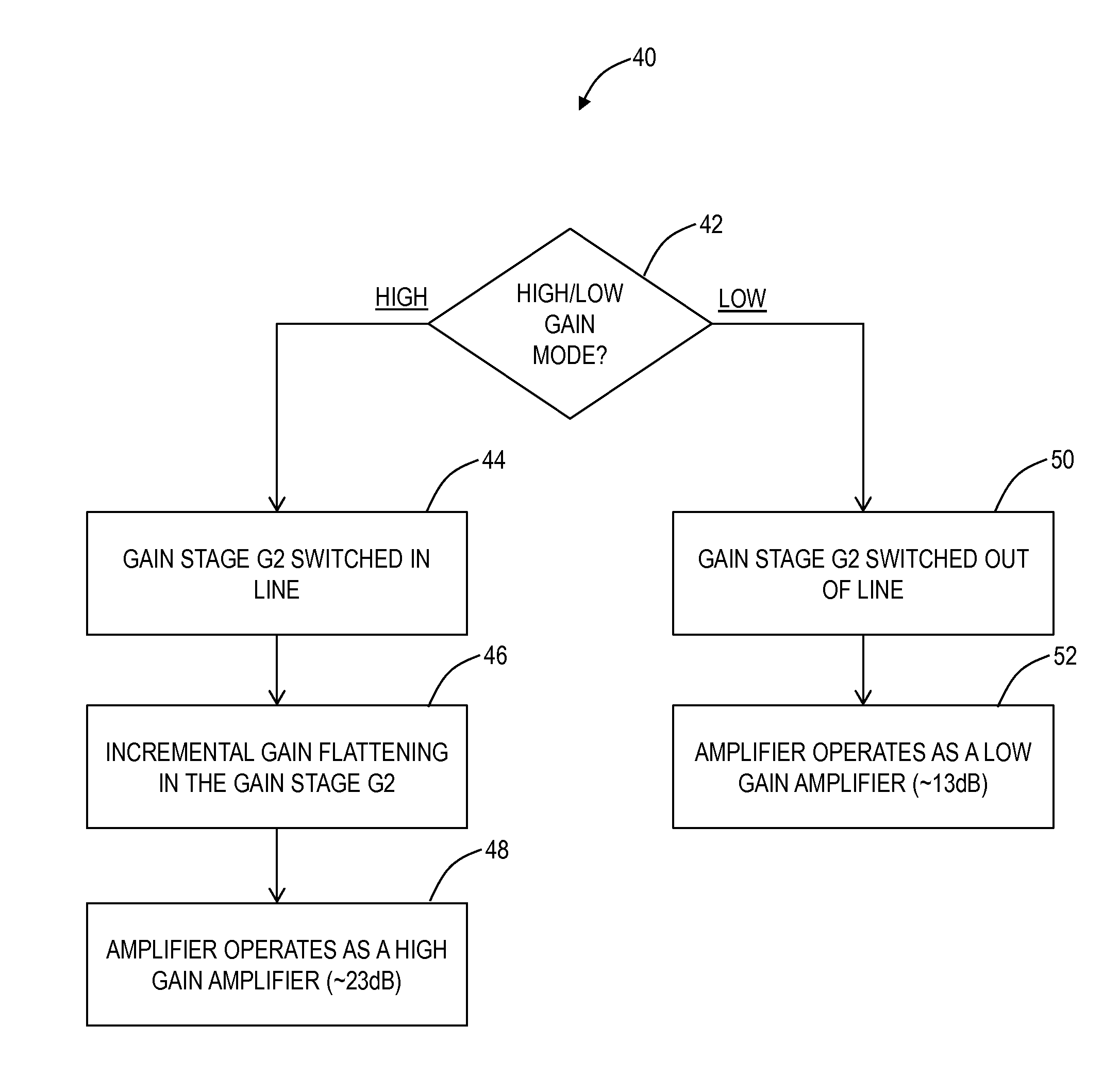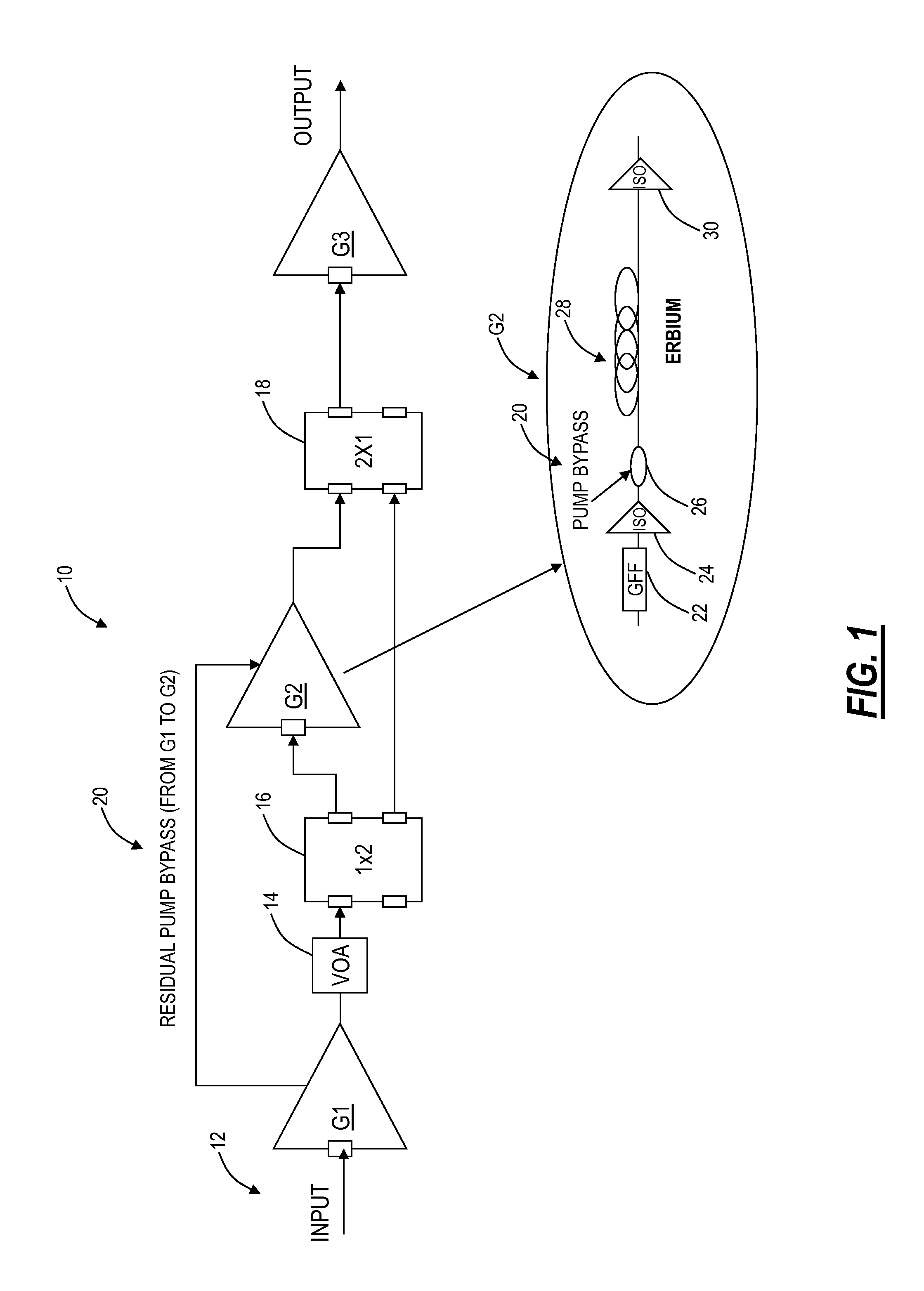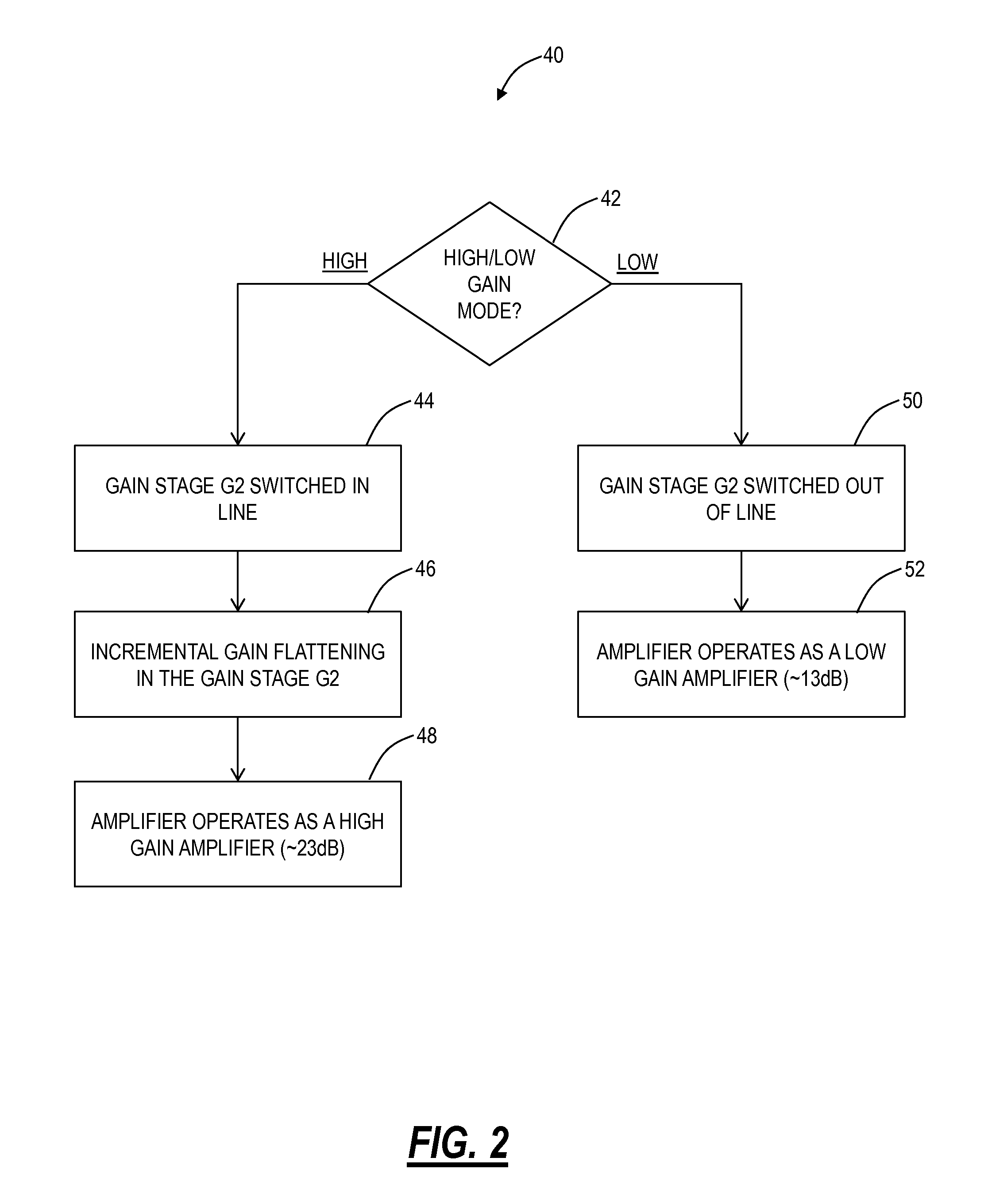Extended dynamic range optical amplifier
a dynamic range, optical amplifier technology, applied in the direction of optical transmission with multiple stages, electromagnetic transmission, transmission, etc., can solve the problems of large variability or spread loss in the span, useful dynamic range, large loss of db in conventional amplifiers, etc., to achieve high gain, low gain mode, and increase gain
- Summary
- Abstract
- Description
- Claims
- Application Information
AI Technical Summary
Benefits of technology
Problems solved by technology
Method used
Image
Examples
Embodiment Construction
[0016]In various exemplary embodiments, an extended dynamic range optical amplifier such as an Erbium Doped Fiber Amplifier (EDFAs) is disclosed. The extended dynamic range optical amplifier can be optimized for high or low span loss conditions by switching an internal stage in or out of an internal light path within the amplifier. Advantageously, equipment manufacturers, network operators, etc. can deploy a single module despite having variability in span losses in actual networks. The extended dynamic range optical amplifier can include a low gain mode and a high gain mode with an internal switch to switch out a gain mid-stage in a low gain mode to extend the useful dynamic range of the amplifier. Further, the extended dynamic range optical amplifier can use residual pump power from an initial stage to pump the gain mid-stage in the high gain mode. For example, in the high gain mode, input power to the first stage is low for the pumps. Advantageously, this eliminates the need for ...
PUM
 Login to View More
Login to View More Abstract
Description
Claims
Application Information
 Login to View More
Login to View More - R&D
- Intellectual Property
- Life Sciences
- Materials
- Tech Scout
- Unparalleled Data Quality
- Higher Quality Content
- 60% Fewer Hallucinations
Browse by: Latest US Patents, China's latest patents, Technical Efficacy Thesaurus, Application Domain, Technology Topic, Popular Technical Reports.
© 2025 PatSnap. All rights reserved.Legal|Privacy policy|Modern Slavery Act Transparency Statement|Sitemap|About US| Contact US: help@patsnap.com



